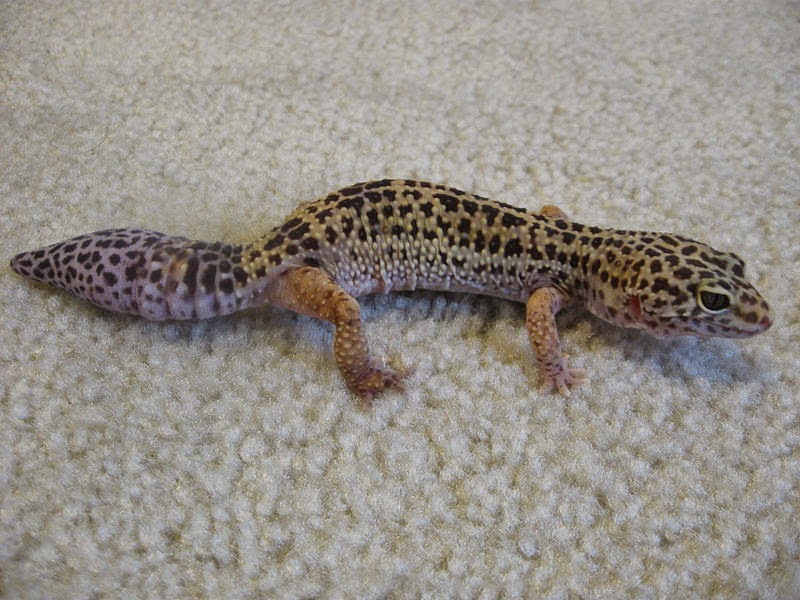Leopard Gecko Facts
Leopard Gecko Facts
1. Also known as the “spotted fat-tailed gecko.”2. The scientific name for your Leopard Gecko is Eublepharis Macularius, which means "true eye-lid" and "spotted" in Latin. They are members of the Gekkonidae or Gecko family. Leopard Geckos are originally from the arid, high desert mountains of Afghanistan, Pakistan, Iraq, Iran, and India.
3. Leopard Geckos are medium-sized lizards that come in a variety of colors and patterns from tan coloration to bright orange, with dark spots or patterns, and some having no pattern at all. Their bodies are covered with raised tubercles, and they have fat tails which store water and fat. They have large, expressive eyes, and the appearance of a smile on their faces. The average size of a full-grown adult is approximately 6-7” and 50-60 grams for females and up to 9” and 70-80 grams for males.
4. The main defining features of this gecko family are well-developed functional eyelids and non-adhesive toes.
5. Leopard geckos are opportunistic feeders, meaning that they will not go out in search of prey, but will stalk prey once in sight.
6. These geckos are nocturnal (active at night) and spend most of their time hiding in wood or under rocks. They are more terrestrial (spending time on land) than geckos with adhesive toes.
7. All geckos lick their eyeballs, although the reason is unknown.
8. Leopard geckos are not as aggressive as other species, although the males are territorial and can be aggressive to other males.
9. Leopard geckos reach sexual maturity at 1 1/2 to 2 years of age.
10. Breeding season is from January through September. Females can store sperm in their oviducts for up to a year until conditions are right.
11. The female lays clutches 3-6 times per breeding season and buries them.
12. The incubation period is 2 months. Sex is linked to egg incubation temperature. Cooler temperatures of less than 82 degrees F produce females; warmer temperatures of 90-92 degrees F produce males. The clutch size is 1-2 eggs (usually 2). When the young hatch, they are approximately 3.5 inches long. The young will eat their first shedding, which is of high nutritional value.
13. Leopard geckos are spotted to blend into their habitat and break up their body outline as protection from predators.
14. If seriously disturbed or grabbed by the tail, it can break off, continuing to wiggle. If lucky, this distracts the predator while the gecko makes a hasty getaway. It can then regenerate its tail, but the new one is not as attractive.
15. If unable to find food for a long period of time, the leopard gecko can live off the fat reserves stored in its tail. They can also go quite a while without water as they get much of their water needs from the prey they eat.
16. When attacking prey, it wiggles its tail just before striking.
17. Leopard geckos shed regularly as they grow and eat their shed for its nutritional value.
18. They use the same area in their enclosure as a bathroom spot (“born potty trained”).
19. Can go for an extended period of time without water because they take most of their water from their prey
20. Are spotted to break up their body outline as camouflage from predators
21. Male leopard geckos are aggressive towards other males in their territory but are tolerant of females.
22. Female leopard geckos can store sperm in their reproductive tracts for a year or more.
23. Unlike some geckos, leopard geckos can close their eyes.
24. Toe pads, which other geckos use to climb vertical walls and trees, are not present in the leopard gecko-instead have tiny claws on the end of their toes.
25. With eyesight comparable to a cat’s, geckos can see better than any other lizard whose vision has been studied.


Comments
Post a Comment